What Is An Interventional Radiologist?
Interventional radiology is a medical specialty that uses minimally invasive techniques to treat conditions that once required surgery. Using imaging like x-ray, MRI, and ultrasound, interventional radiologists can guide catheters and other tools to target areas throughout the body. For 40 years interventional radiologists have been at the front of medical innovation and can be credited for many of the minimally invasive techniques used today.
History
The rise of medical imaging techniques in the 1960s paved the way for minimally invasive interventional procedures. In 1964, Dr. Charles Dotter, known as the “Father of Interventional Radiology”, performed the first angiography. The patient was an 82 year old woman who had refused leg amputation. Dr. Dotter identified stenosis in the superficial femoral artery and used a catheter delivered stent to dilate the narrowing in the vessel. The circulation in her leg returned, gangrene of her toes sloughed off, her leg pain diminished and she was able to walk out of the hospital.
Today, interventional radiologists treat many conditions and diseases using imaging and minimally-invasive, catheter-delivered treatment. They are able to treat strokes by returning blood flow to the brain. Deep vein thrombosis may be dissolved. Using a catheter the IR can stop blood flow, ablate and deliver localized chemotherapy treatment to cancerous tumors. Varicose vein treatment was also revolutionized by Interventional Radiologists. What once required surgery can now be treated in under an hour inside the clinic.
Varicose Vein Treatment
Minimally invasive varicose vein treatment like EVTA and sclerotherapy are performed using ultrasound guidance and catheters. This makes varicose vein treatment a natural extension of an interventional radiologist’s practice.
Endovenous thermal ablation was developed by an interventional radiologist, Dr. Robert Min, over 12 years ago. This procedure has now become the gold standard for treating large refluxing veins. Whether using laser energy or radio-frequency energy, the technique is the same. A catheter is guided through the problematic vein using ultrasound guidance. Once the catheter is in position, the area around the vein is numbed and the ablation device is powered on. The vein is then heated as the catheter is removed. The heat causes scarring in the vein, eventually causing it to be absorbed by the body.
Pelvic Venous Insufficiency Treatment
The presence of varicose veins in the pelvis is known as pelvic venous insufficiency or pelvic congestion syndrome. Women with PVI complain of heaviness and pelvic pain that is worsened by menstrual cycle and intercourse. Just like veins in the legs, veins in the pelvis can fail to return blood properly resulting in pelvic pain. PVI can be treated using an interventional procedure known as pelvic venogram with coil embolization. Using fluoroscopy, the physician accesses a vein in the neck and guides a catheter to the diseased veins in the pelvis. The veins are then filled with small metal coils and occasionally a sclerosant agent is injected. After the procedure, the patient may return to normal daily activities and may experience cramping for a day or two. Success rates for this procedure are around 80% and are measured by evaluating the patient’s pain after a menstrual cycle has occurred.
The Experts of Varicose Vein Treatment in Utah
The IVC team of physicians includes seven board-certified interventional radiologists. Our IRs have been performing varicose vein treatment in Utah for over 11 years and are the most experienced varicose vein specialists in the intermountain west.


